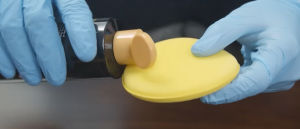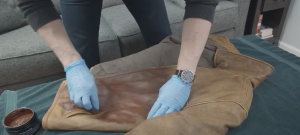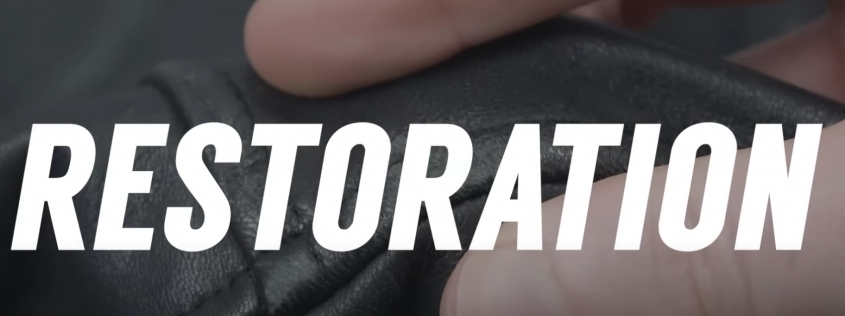I’M A GREEN-LIVING GIRL STRIVING FOR A BETTER FUTURE
GREEN LIVING | RESPONSIBLE TRAVEL | NON-TOXIC BEAUTY | HEALTHY EATING | FITNESS
What is this blog all about
Do you ever sit and wonder what’s going to happen if we don’t start to look after our planet? I do, all the time and it frightens me.
I’m Katie and my blog is about green living, responsible travel, healthy eating, non-toxic beauty and anything that relates to leading a better quality of life in general.
My goal is to educate and help my readers to get them on the path to leading a better, more sustainable and fulfilling way of life.
Our planet is in desperate need of resuscitation and if my blog can inspire just one person to improve their carbon footprint, it’s a job well done.
RESPONSIBLE TRAVEL
Travelling is a gift and it’s one that I try to grab with both hands when I can. Exploring faraway lands and seeing how different life is for those of us that aren’t so fortunate gives me purpose.
I’m a big advocate of responsible travel and love the fact that small changes when travelling can make a BIG difference.
It’s all down to making a conscious decision to plan better and educate oneself on why it’s now more important than ever before to give our planet the respect and care it deserves.


Responsible Travel

Green Living

Healthy Eating & Fitness
MY BLOG

Sustainable Refrigeration & Cooling Solutions
Sustainable refrigeration solutions are increasingly important in reducing environmental impact and improving energy efficiency. One effective approach is the use of roto-molded coolers, which are designed to offer superior insulation, reducing the need for frequent cooling cycles. These coolers, like those reviewed on the Coolers On Sale Website are made through a rotational molding process […]

Restore & Renew Clothing Vs Buying New!
Restoring and renewing clothing, particularly items made from materials like leather, can help extend their lifespan and maintain their appearance. The first step in restoring any piece is thorough cleaning. For leather garments, use a soft cloth or sponge and a gentle leather cleaner or a mixture of mild soap and water to remove dirt […]

Natural Methods for Mosquito Control
Mosquitos are a problem for most people in virtually every area of the world. Some have a few mosquitoes and other areas may have them ten months out of each year. It has a lot to do with how much moisture is in the area where you live and how cold the winters get. Another […]
Sustainable Refrigeration & Cooling Solutions
Sustainable refrigeration solutions are increasingly important in reducing environmental impact and improving energy efficiency. One effective approach is the use of roto-molded coolers, which are designed to offer superior insulation, reducing the need for frequent cooling cycles. These coolers, like those reviewed on the Coolers On Sale Website are made through a rotational molding process that creates durable, energy-efficient containers capable of maintaining cold temperatures for extended periods. This minimizes energy consumption and prolongs the freshness of perishable goods, making them ideal for outdoor activities, emergency preparedness, or off-grid living.
Refrigeration & Portable Solutions
 In addition to roto-molded coolers, high-efficiency refrigerators are another key element in sustainable refrigeration. These refrigerators utilize advanced technologies such as variable-speed compressors, energy-efficient insulation, and smart temperature controls to reduce electricity use while maintaining optimal cooling performance. Many modern models also incorporate eco-friendly refrigerants that have a lower global warming potential (GWP) compared to traditional hydrofluorocarbons (HFCs). When combined, these innovations contribute to a more sustainable approach to refrigeration, lowering carbon footprints and reducing waste while ensuring that food and beverages are kept fresh with minimal environmental impact.
In addition to roto-molded coolers, high-efficiency refrigerators are another key element in sustainable refrigeration. These refrigerators utilize advanced technologies such as variable-speed compressors, energy-efficient insulation, and smart temperature controls to reduce electricity use while maintaining optimal cooling performance. Many modern models also incorporate eco-friendly refrigerants that have a lower global warming potential (GWP) compared to traditional hydrofluorocarbons (HFCs). When combined, these innovations contribute to a more sustainable approach to refrigeration, lowering carbon footprints and reducing waste while ensuring that food and beverages are kept fresh with minimal environmental impact.
Off-Grid Cooling Options To Consider
Sustainable cooling options for off-grid living are essential for minimizing energy consumption while maintaining comfort and preserving resources. One of the most effective strategies is the use of passive cooling techniques, which rely on natural processes to regulate temperature. These can include architectural designs that maximize airflow, such as strategically placed windows, skylights, and ventilation shafts, or the use of thermal mass—materials that absorb heat during the day and release it at night—to stabilize indoor temperatures. In combination with shading strategies, like planting trees or using retractable awnings, passive cooling can significantly reduce the need for mechanical cooling.
 For more active cooling solutions, solar-powered systems offer a sustainable option for off-grid cooling. Solar refrigerators, fans, and air conditioning units can be powered by photovoltaic (PV) solar panels, which provide a reliable and renewable energy source. These systems are designed to be energy-efficient, using advanced technologies like variable-speed compressors or evaporative cooling systems, which use less electricity than traditional systems. Additionally, thermoelectric coolers, which use the Peltier effect to transfer heat between two different materials, can be a low-energy alternative for small-scale cooling needs.
For more active cooling solutions, solar-powered systems offer a sustainable option for off-grid cooling. Solar refrigerators, fans, and air conditioning units can be powered by photovoltaic (PV) solar panels, which provide a reliable and renewable energy source. These systems are designed to be energy-efficient, using advanced technologies like variable-speed compressors or evaporative cooling systems, which use less electricity than traditional systems. Additionally, thermoelectric coolers, which use the Peltier effect to transfer heat between two different materials, can be a low-energy alternative for small-scale cooling needs.
Roto-molded coolers also provide an off-grid solution for keeping food and beverages cool without relying on electricity. These coolers are highly insulated, making them effective for maintaining low temperatures for extended periods without frequent need for ice or refrigeration. Together, these sustainable cooling solutions allow for comfortable living off the grid, reducing environmental impact while providing reliable and energy-efficient cooling options.
Eco-friendly Energy Saving

Eco-friendly energy-saving tips for homesteads focus on reducing energy consumption while promoting sustainability and self-sufficiency. One of the most effective strategies is improving energy efficiency through better insulation and airtightness in the home. Sealing gaps around windows, doors, and walls, and using high-quality insulation materials can significantly reduce the need for heating and cooling, which are major energy expenditures. Additionally, installing energy-efficient appliances such as LED lighting, low-flow faucets, and Energy Star-rated refrigerators and washing machines can further lower electricity and water usage.
Another key approach is harnessing renewable energy sources like solar and wind power. Installing solar panels or small wind turbines on the homestead can provide a reliable, renewable energy supply, reducing dependence on fossil fuels and lowering electricity bills. Solar water heaters and solar ovens can also be used for heating water and cooking, minimizing the need for traditional electricity or gas-based systems.
Rainwater & Solar
Rainwater harvesting and water conservation techniques are also important for reducing energy use, as heating water can be one of the most energy-intensive tasks in a home. By collecting and storing rainwater, homesteaders can minimize the need for electric water pumps and reduce water consumption. Furthermore, planting native or drought-tolerant plants around the homestead can lower water usage and reduce the energy needed for irrigation.
 Lastly, investing in energy-efficient heating and cooling systems, such as wood stoves, passive solar heating, or geothermal systems, can further enhance sustainability. These alternatives are less reliant on grid energy and can help maintain a comfortable living environment while reducing carbon footprints. By incorporating a combination of these eco-friendly practices, homesteads can significantly reduce their environmental impact and create a more sustainable, energy-efficient lifestyle.
Lastly, investing in energy-efficient heating and cooling systems, such as wood stoves, passive solar heating, or geothermal systems, can further enhance sustainability. These alternatives are less reliant on grid energy and can help maintain a comfortable living environment while reducing carbon footprints. By incorporating a combination of these eco-friendly practices, homesteads can significantly reduce their environmental impact and create a more sustainable, energy-efficient lifestyle.
Restore & Renew Clothing Vs Buying New!
 Restoring and renewing clothing, particularly items made from materials like leather, can help extend their lifespan and maintain their appearance. The first step in restoring any piece is thorough cleaning. For leather garments, use a soft cloth or sponge and a gentle leather cleaner or a mixture of mild soap and water to remove dirt and grime. Always test the cleaner on an inconspicuous area before applying it to the entire piece. After cleaning, allow the leather to air dry naturally—avoid using direct heat sources like hair dryers, as they can cause the material to dry out or crack.
Restoring and renewing clothing, particularly items made from materials like leather, can help extend their lifespan and maintain their appearance. The first step in restoring any piece is thorough cleaning. For leather garments, use a soft cloth or sponge and a gentle leather cleaner or a mixture of mild soap and water to remove dirt and grime. Always test the cleaner on an inconspicuous area before applying it to the entire piece. After cleaning, allow the leather to air dry naturally—avoid using direct heat sources like hair dryers, as they can cause the material to dry out or crack.
 Once cleaned, moisturizing and conditioning the leather is essential. Leather tends to lose its natural oils over time, leading to stiffness and cracks. Apply a leather conditioner or cream designed to replenish moisture, working it into the material with a soft cloth in circular motions. This helps to restore the suppleness and luster of the leather. For clothing made from fabric, consider using a fabric softener or specific conditioner designed for the material.
Once cleaned, moisturizing and conditioning the leather is essential. Leather tends to lose its natural oils over time, leading to stiffness and cracks. Apply a leather conditioner or cream designed to replenish moisture, working it into the material with a soft cloth in circular motions. This helps to restore the suppleness and luster of the leather. For clothing made from fabric, consider using a fabric softener or specific conditioner designed for the material.
For deeper repairs, such as scratches, scuffs, or stains, a leather repair kit can be useful. These kits often come with filler compounds such as resolene fiebings and color matching dyes that allow you to restore minor damage. For fabric clothing, small holes or rips can be mended using fabric glue or a sewing kit, depending on the size and location of the damage.
Additionally, regularly maintaining your clothing through proper storage is key to prolonging its life. For leather, store garments in a cool, dry place away from direct sunlight to prevent fading and deterioration. Use padded hangers for jackets and coats to preserve their shape, and for fabric clothing, ensure it is washed according to care instructions to avoid wear and tear.
By following these simple steps—cleaning, conditioning, repairing, and proper storage—you can significantly extend the life of your clothing and keep it looking fresh and revitalized.
If You Can’t Restore, Consider Donating
Donating clothes can save a significant amount of landfill space compared to throwing them away. According to various studies, including data from the Environmental Protection Agency (EPA), approximately 85% of textiles in the U.S. end up in landfills or incinerators each year. In 2018, the EPA estimated that around 17 million tons of textile waste were generated in the United States alone, and most of this waste could have been recycled, reused, or repurposed.
When you donate clothes instead of tossing them, you help divert those items from landfills, where they would otherwise take up valuable space and contribute to environmental degradation. While the exact amount of landfill space saved can vary depending on the material and the volume of clothing, the broader impact is significant. For example:
- Clothing is bulky: Textiles, especially items like coats, sweaters, and jeans, are large and take up a considerable amount of space in landfills. Donating just one large bag of clothes can prevent multiple cubic feet of waste from filling up landfill space.
- Textiles can take years to break down: Some fabrics, like synthetics and blends, can take hundreds of years to decompose fully in a landfill. While natural fibers like cotton, wool, or silk decompose more quickly, even they contribute to landfill mass.
- Reuse reduces demand for new resources: Donating clothes extends their lifecycle, which reduces the need for new garments to be produced. This indirectly helps reduce the demand for raw materials, such as cotton, oil (for synthetics), and water, which are needed to manufacture new clothing. The production process for new clothes is resource-intensive and contributes to environmental issues like water pollution and carbon emissions.
Environmental Benefits of Donating Clothes
- Landfill space: Each ton of textiles that is diverted from landfills is equivalent to saving about 3.6 cubic yards of landfill space.
- Energy and resource savings: Donating clothes also helps reduce the energy and resources required to make new items, lowering overall environmental impact.
Practical Impact
If every American were to donate one additional garment per year instead of throwing it away, it would result in millions of tons of clothing being kept out of landfills. In 2020, it was estimated that 92 million tons of textiles were thrown away globally. If just a fraction of these items were donated instead, it could result in a substantial reduction in landfill waste.
In summary, donating clothes not only saves significant landfill space but also contributes to a circular economy by reusing materials, conserving resources, and reducing the overall environmental impact of textile waste.
